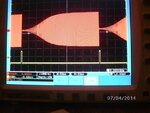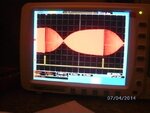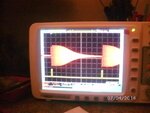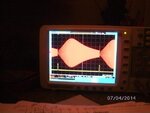atferrari
Full Member level 4
- Joined
- Jun 29, 2004
- Messages
- 237
- Helped
- 7
- Reputation
- 14
- Reaction score
- 3
- Trophy points
- 1,298
- Location
- Buenos Aires - Argentina
- Activity points
- 1,996
I have never done this before.
Today I started to test the state variable filter in the attached circuit.
My setup is just a (brand new) function generator sweeping from 30 Hz up to 30 KHz, 1 V pk-pk - 0 offset. Output impedance set to 50 ohms and signal applied to R7 which not yet connected to the preamp.
Soon I realized that I needed to trigger the scope (generator's 2nd channel, delivering pulse with the same period of the sweeping).
Basically I get a response that barely looks what I could expect for HP, BP and LP (albeit irregular and asymetric) but I cannot find anything that I could call a notch.
Op amps polarization checks as +4,4V, in case you ask.
Eventually I could take some pictures tomorrow.
My questions: am I doing right?
How to measure fc? I suspect there is an obvious way but I cannot think of any right now. I have no markers available.
Comments and suggestions will be aprreciated.
Today I started to test the state variable filter in the attached circuit.
My setup is just a (brand new) function generator sweeping from 30 Hz up to 30 KHz, 1 V pk-pk - 0 offset. Output impedance set to 50 ohms and signal applied to R7 which not yet connected to the preamp.
Soon I realized that I needed to trigger the scope (generator's 2nd channel, delivering pulse with the same period of the sweeping).
Basically I get a response that barely looks what I could expect for HP, BP and LP (albeit irregular and asymetric) but I cannot find anything that I could call a notch.
Op amps polarization checks as +4,4V, in case you ask.
Eventually I could take some pictures tomorrow.
My questions: am I doing right?
How to measure fc? I suspect there is an obvious way but I cannot think of any right now. I have no markers available.
Comments and suggestions will be aprreciated.



